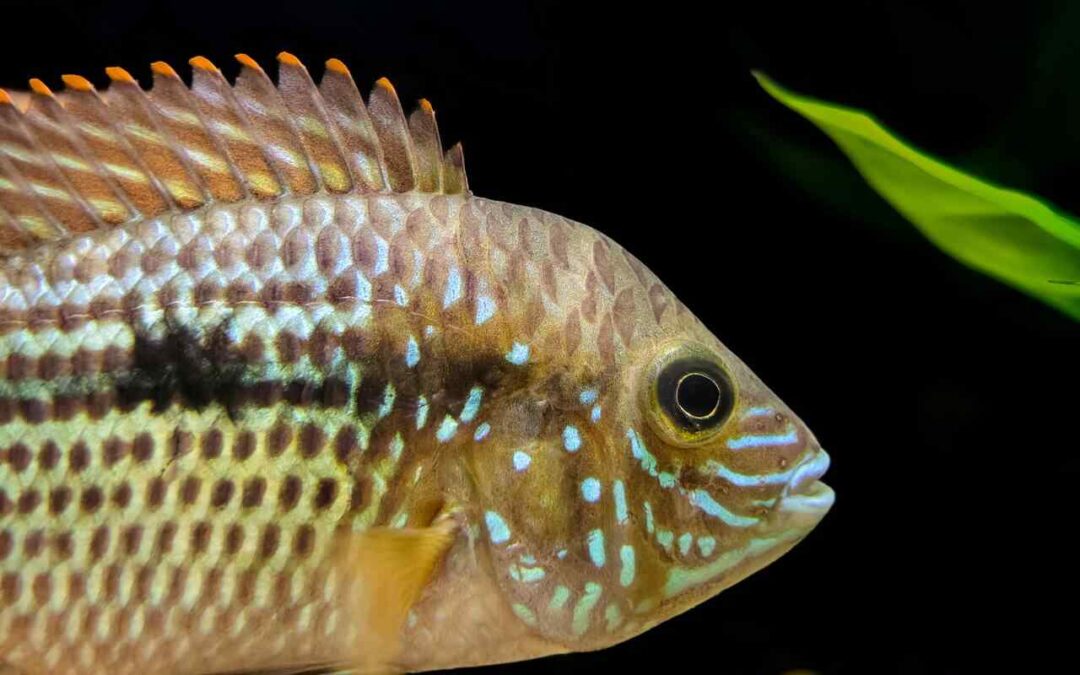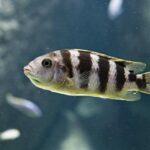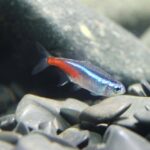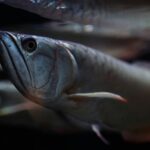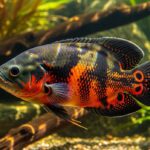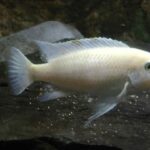Cichlids are not just another pretty face in the aquarium world—they’re bold, brilliant, and bursting with personality. From the electric colors of African Mbunas to the elegant glide of a South American angelfish, these fish are a favorite among aquarists for good reason. But with their beauty comes a bit of complexity. Understanding cichlid types is key to creating a thriving tank and keeping the peace underwater.
Let’s dive into the most popular cichlid species, their behavior, habitat needs, and how to keep them happy in your home aquarium.
What Makes Cichlids So Special?
Cichlids (family Cichlidae) are a group of freshwater fish with more than 1,300 identified species—and many more likely yet to be discovered. What makes them so unique?
- Color: Cichlids are among the most vibrantly colored freshwater fish, often rivaling saltwater species.
- Behavior: They’re smart, social, and sometimes territorial—making for fascinating interactions.
- Parental Care: Many cichlids are devoted parents, guarding their eggs and fry with impressive diligence.
- Diversity: Found mainly in Africa, South America, and parts of Asia, their body shapes, diets, and behaviors vary widely.
Whether you’re a beginner or an experienced fishkeeper, there’s a cichlid type that fits your skill level and tank setup.
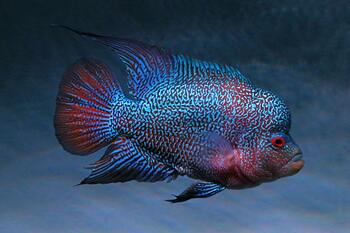
African Cichlid Types
Africa is home to some of the most colorful and aggressive cichlid species. These fish thrive in hard, alkaline water and need plenty of space to establish their territories.
1. Mbuna Cichlids (Lake Malawi)
Mbunas are rock-loving cichlids, known for their bold behavior and bright colors—think neon yellows, blues, and oranges.
- Size: 4–6 inches
- Tank Setup: Rocky environments with caves and hiding spots
- Water pH:8–8.6
- Behavior: Territorial and best kept in species-only or Mbuna-only tanks
- Popular Species:
- Labidochromis caeruleus (Yellow Lab)
- Pseudotropheus demasoni
Real-Life Tip: Keep them in groups of at least 6 to spread out aggression. Overcrowding (oddly enough) can help by diffusing tension among males.
2. Peacock Cichlids (Aulonocara)
These are some of the most popular African cichlids, thanks to their shimmering scales and relatively calm temperament compared to Mbunas.
- Size: 4–7 inches
- Tank Setup: Sandy substrate with moderate rock work
- Water pH:5–8.5
- Behavior: Less aggressive; can be housed with Haps
- Popular Species:
- Aulonocara baenschi (Sunshine Peacock)
- Aulonocara nyassae (Blue Peacock)
3. Haplochromis (Haps)
Haps are larger, open-water swimmers and usually less aggressive than Mbunas. Their streamlined bodies and iridescent coloration make them a showpiece.
- Size: 5–8 inches
- Tank Setup: Large open areas for swimming with rock structures
- Popular Species:
- Sciaenochromis fryeri (Electric Blue Hap)
- Copadichromis borleyi
Pro Tip: Avoid mixing male Peacocks or Haps with similarly colored species—they may fight over dominance or territory.
4. Lake Tanganyika Cichlids
These are some of the oldest and most behaviorally complex cichlids. Many are shell dwellers or substrate spawners.
- Popular Types:
- Neolamprologus brichardi (Princess of Burundi)
- Altolamprologus calvus
- Frontosa cichlid—a gentle giant that needs a larger tank
Shell dwellers like Neolamprologus multifasciatus actually live and breed inside empty snail shells, making for fascinating displays.
South American Cichlid Types
South American cichlids offer more diversity in behavior—from peaceful community members to larger, more demanding species. They prefer softer, more acidic water and a planted or driftwood-heavy environment.
1. Angelfish (Pterophyllum scalare)
Graceful and iconic, angelfish are a staple in many freshwater tanks. Their long fins and vertical stripes give them a truly angelic look.
- Size: 6 inches body, up to 8 inches with fins
- Temperament: Semi-peaceful
- Best Tankmates: Tetras, corydoras, gouramis (avoid fin-nippers)
- Breeding Note: They pair for life and guard eggs attentively
2. Discus (Symphysodon spp.)
Known as the “kings” of the aquarium, Discus are delicate, beautiful, and rewarding when cared for properly.
- Size: 6–8 inches
- Temperament: Peaceful but sensitive
- Water Needs: Soft, acidic (pH 6.0–6.8), warm temperatures (82–86°F)
- Ideal Setup: Calm environment, frequent water changes, and low nitrates
Care Tip: Avoid sudden changes in water parameters—Discus are very sensitive to fluctuations.
3. Oscar Fish (Astronotus ocellatus)
If you want a fish with personality, Oscars are like underwater dogs. They recognize their owners, can be hand-fed, and will “beg” for food.
- Size: Up to 12–14 inches
- Temperament: Aggressive, especially during feeding
- Tank Size: Minimum 75 gallons
- Tankmates: Only large, robust fish (no small species—they’ll be snacks!)
4. Convict Cichlid (Amatitlania nigrofasciata)
These zebra-striped cichlids are hardy and easy to breed—great for learning about cichlid reproduction.
- Size: 4–6 inches
- Temperament: Very aggressive during spawning
- Tank Size: At least 30 gallons
- Best Kept: As a pair in a species-only tank
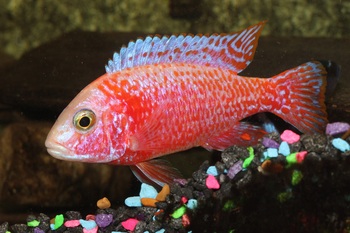
Dwarf Cichlids
If you love cichlids but don’t have space for a giant tank, dwarf cichlids are a fantastic choice.
1. German Blue Ram (Mikrogeophagus ramirezi)
Colorful and peaceful, Rams thrive in planted community tanks. They’re a bit sensitive, so stable water conditions are a must.
- Size: 2–3 inches
- Temperament: Peaceful
- Water Conditions: Warm and soft (pH 6.0–7.0)
- Ideal Tankmates: Neon tetras, corydoras, hatchetfish
2. Apistogramma
These intelligent, territorial little fish come in many species and color patterns. They’re especially rewarding in planted aquascapes.
- Size:5–3.5 inches
- Tank Setup: Sandy bottom, leaf litter, caves
- Popular Types:
- Apistogramma cacatuoides (Cockatoo Dwarf)
- Apistogramma agassizii
Behavior Note: Males are usually more colorful and larger; keep one male per tank to reduce aggression.
Cichlid Tank Setup Tips
Creating the right environment is key to cichlid health and harmony. Here are some essentials:
Tank Size Guidelines
- Small Cichlids (e.g., rams, apistos): 20–30 gallons
- Medium Cichlids (e.g., Mbunas, angels): 55 gallons minimum
- Large Cichlids (e.g., Oscars, Frontosa): 75–125+ gallons
Water Chemistry
- African Cichlids: Hard, alkaline (pH 7.8–8.6)
- South American Cichlids: Soft, slightly acidic (pH 6.0–7.5)
Decorations & Substrate
- Use rocks and caves for African cichlids (especially Mbunas).
- Driftwood, sand, and plants suit South American types.
- Avoid sharp rocks or decor that can damage fins.
Filtration & Maintenance
- Use a powerful filter—cichlids are messy eaters.
- Perform weekly water changes (25–50%) depending on tank size and bio-load.
- Monitor ammonia, nitrites, and nitrates closely.
Fun Fact: Cichlids Are Smart
Cichlids have shown problem-solving skills and even facial recognition. Some studies suggest they can remember individual humans—a claim any Oscar owner will likely confirm! Aside from cichlids, here are some facts about goldfish.
FAQs About Cichlid Fish Types
Q1: Are cichlids hard to care for?
Not necessarily. Some types like convicts and angelfish are beginner-friendly, while others like Discus require more experience.
Q2: Can I keep different cichlid species together?
It depends. African cichlids do best with other African species. South American cichlids can be mixed cautiously. Avoid combining African and South American fish.
Q3: Do cichlids eat live plants?
Yes—especially African cichlids. If you want a planted tank, stick to hardy plants like Java fern, Anubias, or use plastic/silk decor.
Q4: How can I tell if cichlids are fighting or playing?
Look for nipped fins, constant chasing, or hiding behavior. Occasional posturing is normal, but injury or stress is not.
Q5: How often should I feed them?
1–2 times daily. Use cichlid-specific pellets and rotate with fresh/frozen foods for a balanced diet.
Q6: Do cichlids need special lighting?
Not particularly. Moderate lighting is sufficient for most species. However, proper lighting helps enhance their colors and supports plant growth if you have a planted tank.
Q7: Why are my cichlids fighting?
\Cichlids are territorial. Fighting often occurs due to overcrowding, lack of hiding spots, or breeding behavior. Rearranging the decor can sometimes reset territories.
Q8: How long do cichlids live?
Most live between 5–10 years, but some, like Oscars and Frontosas, can live over 15 years with proper care.
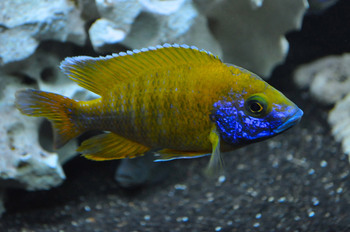
Final Thoughts
Cichlid fish are a window into the wild—each with its own quirks, colors, and character. Whether you’re drawn to the shimmering blues of African lakes or the regal poise of a Discus, there’s a cichlid type out there waiting to steal your heart.
Yes, they can be territorial. Yes, they can be fussy about their tankmates. But give them what they need—a balanced diet, proper space, clean water, and a thoughtfully arranged tank—and you’ll be rewarded with one of the most entertaining and intelligent freshwater fish experiences out there.

